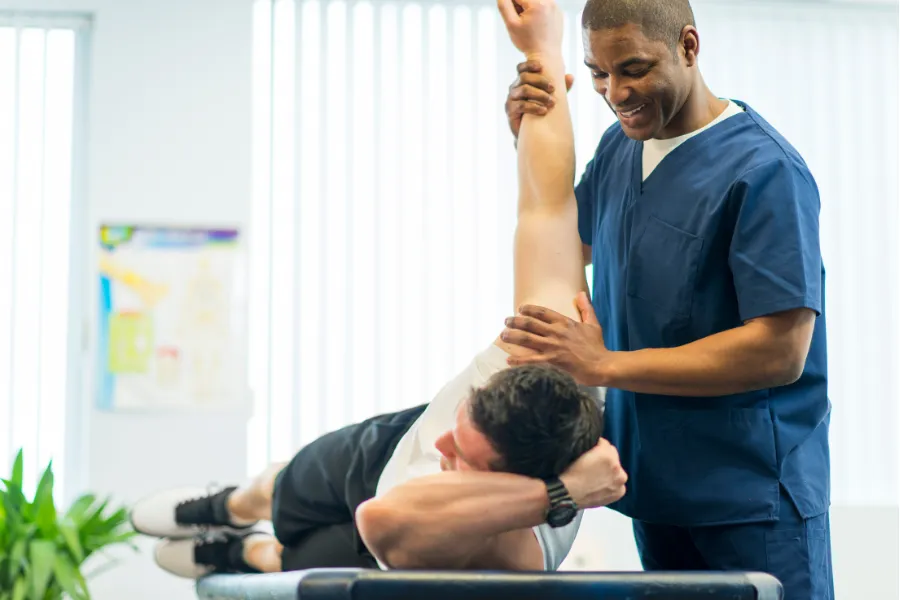Urinary Incontinence in Males
Did you know urinary incontinence in men is both preventable and manageable?
According to a recent study of 81 males showing signs of urinary incontinence, a structured physiotherapy program can improve and/or fully restore continence levels.
Following surgery, early institution of physiotherapy can help patients regain continence.
What Causes Urinary Incontinence?

- Nerve problems, spinal cord injuries and problems with the prostate
- Weak urinary sphincter following surgery
- Overactive bladder
- Having a bladder that does not contract properly
Are There Different Types of Urinary Incontinence?
Yes, there are several types of urinary incontinence in men. Those experiencing incontinence can typically be classified within three categories.
- Stress incontinence occurs when you put stress on your bladder. For instance, you may leak urine when you sneeze, cough or laugh.
- If you find yourself running to the bathroom afraid you won’t make it in time, even when you’ve had little to drink, you may be experiencing urge incontinence.
- If you find that you have the urge to urinate but only a small amount comes out, you may be experiencing overflow incontinence.
- When the urinary sphincter no longer works, you will most likely experience total incontinence, which means that you are leaking at all times.
What Can Be Done About Urinary Incontinence?
Unfortunately, no single treatment works for everyone. Treatment for male urinary incontinence varies according to severity, type of incontinence, age, lifestyle and several other factors. Kegel exercises in men are shown to improve or regain bladder control; however, Kegels are not a one size fits all.
The best option may be physical therapy.
How Can Physical Therapy Help Urinary Incontinence?
After an evaluation, your physical therapist will put together a personalized treatment plan to help strengthen your pelvic-floor muscles and improve overall function.
Likely results after working with your physical therapist include:
- Gaining control of your symptoms
- Reducing the need for pads and undergarments, incontinence medication and possible surgery



